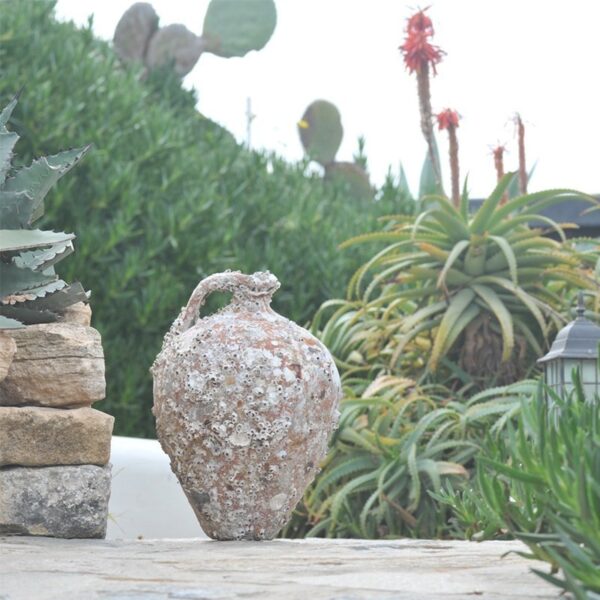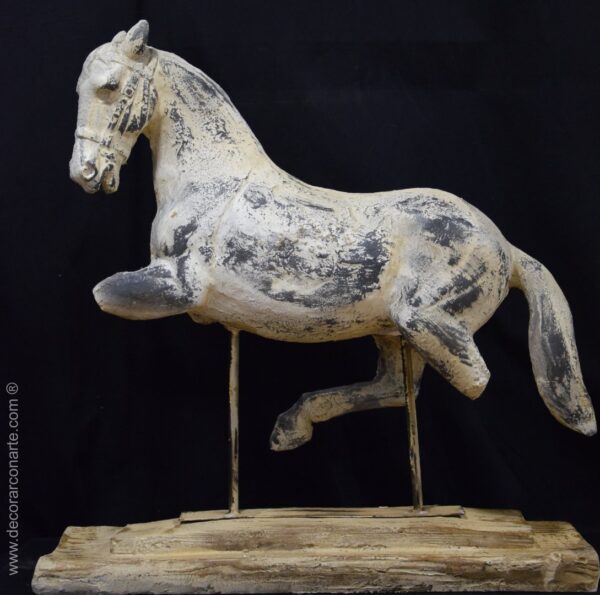Description
Model originating from: Brindisi, Italy. Dating: 2nd-1st century BC. Use: to transport oil. Size: 44 x 34 cm. Weight: 5.8 kg.
Replica of an ancient amphora, a very faithful reproduction of the amphorae found in shipwrecks. Ceramic pieces aged under the sea for 2 years.
The amphorae acquire a natural covering of marine flora and fauna, giving them an appearance of more than 2000 years old. Each piece is unique and unrepeatable.
The iron bracket is included.
Amphora replica of the Gauloise type, which were made between the 1st and 3rd centuries AD. They originated in Narbonne Gaul, mainly in the lower Rhône valley (right bank), where five specialised workshops used a specific sandy clay fabric to make these amphorae. Another production centre of this type with a sandy cloth was discovered near Castres in Lusitania (Portugal). The distribution was regional in Narbonnean Gaul, especially in the Rhone Valley, the main production area. Some remains have also been found, but in small quantities, along the Rhine, in Britain and in Italy.
Production process:
1.- The models are selected and made in terracotta, after a meticulous study of the shapes and uses that were given to them in the various ancient cultures of the Mediterranean. These reproductions of ancient amphorae are faithfully hand-made by master potters.
2.- After drying and firing, the amphorae are submerged in the seabed for long periods ranging from 18 months to 2 years, depending on the case. During these years, and thanks to a plankton recirculation system, the amphorae are nourished in an accelerated way by marine life with shells, small molluscs, algae, corals and sponges.
3.- During the time that the pieces remain submerged, it will be necessary to maintain the seabed by manually moving them one by one in the various ecosystems prepared for them, so that they are enriched with life. The varied colonisation of the surface will make each piece unique and unrepeatable.
4.- After the meticulous extraction from the seabed, they are exposed and dried in the open air for a certain period of time, so that the marine life adhering to the ceramics can finish fossilising and dry. The result is a unique amphora that reproduces the passage of thousands of years at the bottom of the sea.
Certified and exclusive amphorae
As each piece is unique, they carry a numbered certification with a plaque certifying their origin and a parchment with historical information about that model of amphora.
Special packaging
For total safety and protection during transport, the amphorae are packed in Instapak® foam.














Reviews
There are no reviews yet.